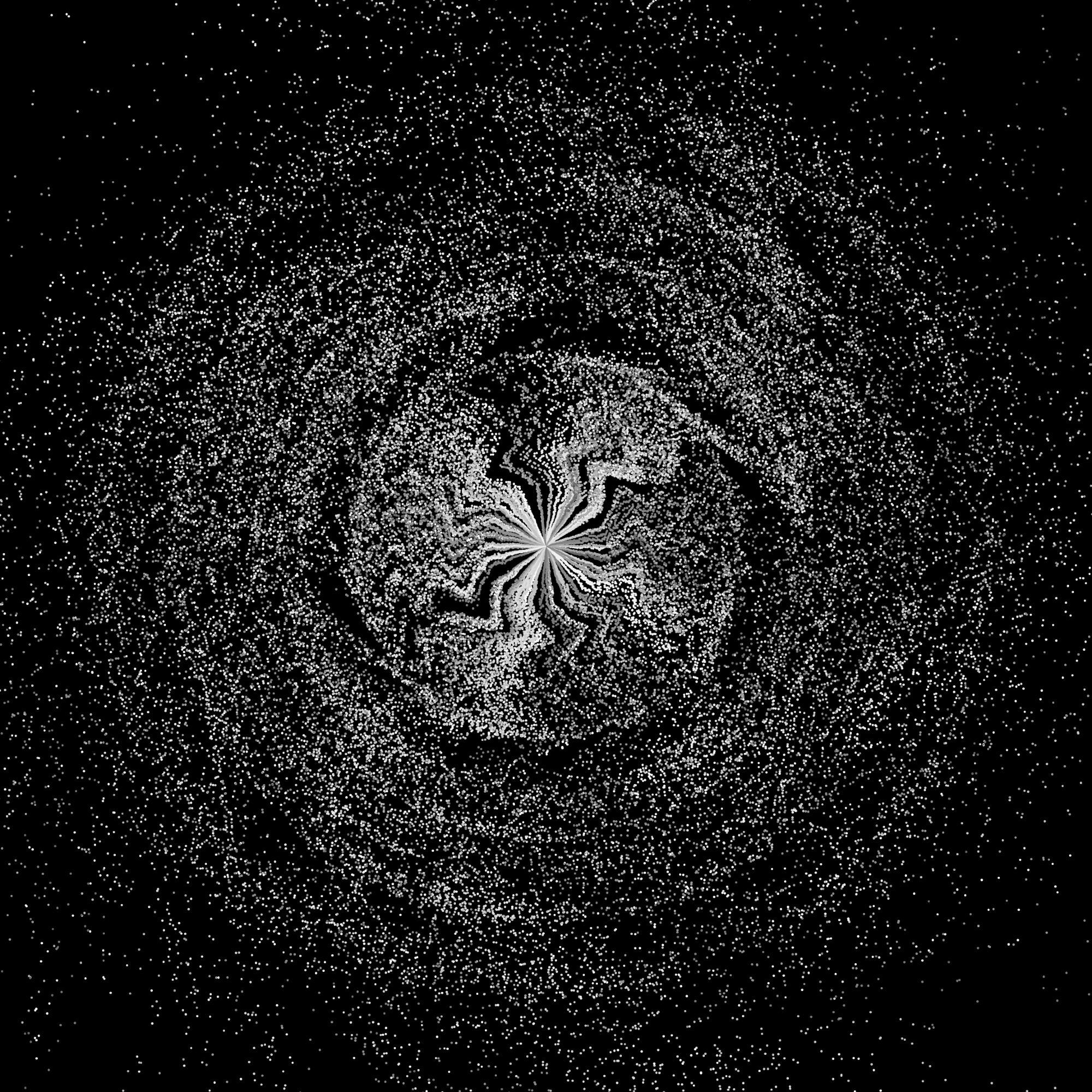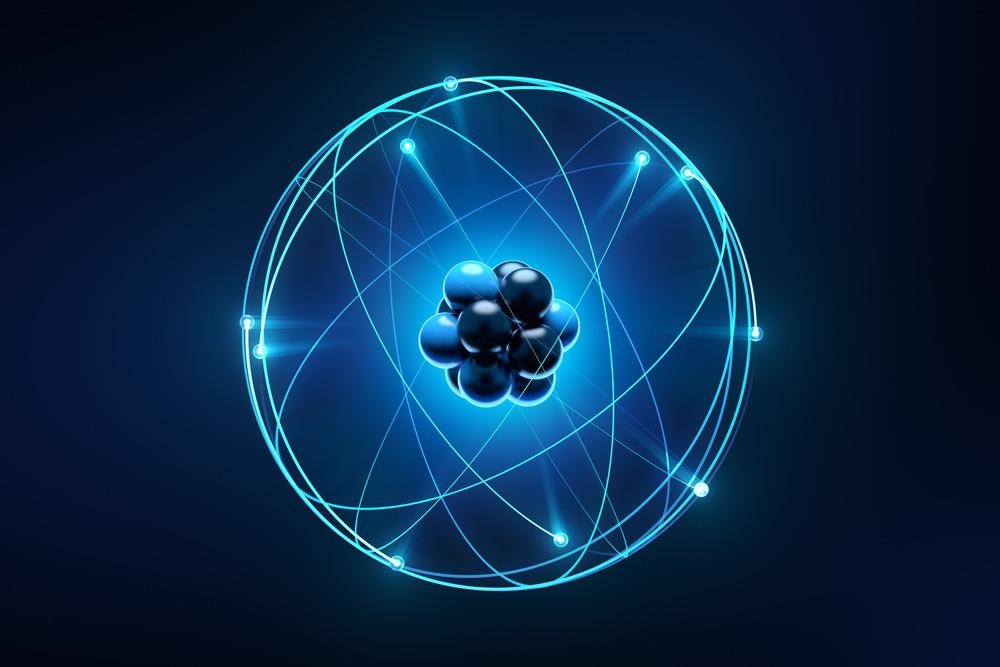By creating a swirling vortex beam of atoms and larger molecules for the first time, researchers could be ready to explore the internal structure of atoms in finer detail.

Image Credit: Funny Drew/Shutterstock.com
We are all familiar with the image of a swirling cloud of dust and debris that represents a tornado, but at the heart of these powerful weather events are central vortices with wind speeds greater than 220 miles per hour.
These wind speeds in its central vortex make the tornado capable of incredible feats of devastation that can have a tremendous impact on the lives of anyone unfortunate to live in its path.
Yet, vortices — defined as a funnel shape formed by whirling material that leaves a cavity or vacuum at its center — can happen on very small scales too. These vortices have already been created on the smallest stage of fundamental particles like photons and electrons.
A research team based in Israel has gone a step above this by creating the first vortex beams made from atoms and molecules.
Atomic Vortex Beams — More Than a Storm in Teacup
In the experiments, led by Weizmann Institute of Science, Tel Aviv, Professor Edvardas Narevicius, the team manipulated atoms so precisely that they believe the research could reveal details surrounding the fundamental properties of matter itself.
The discovery of photon and electron vortex beams carrying angular momentum has produced many advances, particularly in the fields of optical imaging, optical and electron microscopy, communications, quantum optics, and micromanipulation; Narevicius and his co-authors point out in a paper describing their research, published in the journal Science.
“Vortices represent one of the clearest manifestations of angular momentum in nature, governing the hydrodynamics of the smallest insects, patterns of weather, and the motions of the stars in the galaxy,” the authors explain. “On all scales, vortices are characterized by the circulation of flux around an axis, whether the flux is composed of fluid mass in a classical eddy magnetic field in a superconductor, or phase in a superfluid wave function.”
While the generation of these vortex beams with fundamental particles like electrons and photons is well-established and has been used to create devices like optical tweezers — highly focused lasers that can be used to manipulate microscopic and sub-microscopic objects like atoms—what had not been done before was the generation of vortex beams with non-fundamental particles.
By non-fundamental particles, scientists mean particles made up of smaller constituents like atoms — made from protons, neutrons, and electrons — and molecules, made up of groupings of atoms.
Because these fundamental particles have no internal structure, these beams can’t teach us much about interactions at an atomic level. However, doing the same with atoms and molecules could.
“Thus far, no experiment has created vortex beams of nonelementary particles,” the authors write. “Here, we present the first reported experimental demonstration of vortex beams with nonelementary particles, namely atoms and molecules of helium.”

Image Credit: Igor Batrakov/Shutterstock.com
Thus Narevicius and his team set about creating vortex beams of atoms and molecules. The first step in doing this is considering these particles' wavefunctions.
Quantum Physics: Making Waves
In quantum mechanics, particles are described using wave equations and thus have an associated wave function. This is tied to one of the fundamental findings of quantum physics: the idea that all particles possess something called particle-wave duality.
This first hint of this duality of nature was delivered by Young’s infamous double-slit experiment, first using photons. The experiment demonstrates that traveling photons display wave-like behavior, resolving as particles when they strike a surface.
This means it is actually wrong to describe light as a particle and a wave. It is more accurate to say that the basic constituents of light — photons — can both be modeled as a wave and a particle. In reality, light is neither.
The concept of particle and wave duality was staggering enough to discover in light, but when the double-slit experiment is conducted with electrons, these physical particles display the same duality in nature.
The experiment has since been re-conducted with increasingly larger particles, including atoms and much larger molecules.
In 1999, attempts to assess the limits at which this quantum duality breaks down extended to carbon-60 molecules, nick-named Bucky Balls due to their resemblance to the architecture of Buckminster Fuller.
Generating Atomic Vortex Beams
Narevicius and his team created and shaped wave functions in atoms by starting with a supersonic gas source to generate a beam of helium atoms. Then by firing these beams at low temperatures through forked diffraction gratings they revealed a series of ring-shaped patterns corresponding to nonzero orbital angular momentum (OAM) states of helium atoms.
The researchers also observed vortex beams of metastable helium dimers — a diatomic molecule consisting of two helium atoms that is formed in the supersonic expansion of the atomic gas after an electrical discharge.
They say that although the experiments used metastable helium beams, due to the fact they can be efficiently detected, the method they have devised could be generally applied to any supersonic beam of atoms or molecules. This means that it could be used to create vortices of ions and protons as well as atoms and molecules.
Thus, the team has demonstrated that it is possible to manipulate the wave function of a beam of much larger and more complex particles than electrons and photons.
The research could also help answer the question of what happens in interactions between the protons and neutrons that make up atoms when said atoms are part of a vortex beam. It could also, therefore, help reveal hidden details about the structure of atoms.
In addition to this, the team also believes that by creating vortex beams of atoms and larger particles, scientists could learn more about the reason why angular momentum is conserved in so many physical laws.
This could, in turn, lead to a better understanding of why certain transitions are allowed at the quantum level, while others are forbidden.
References
Luski. A., Segev. Y., Narevicius. E., et al, [2021], ‘Vortex beams of atoms and molecules,’ Science, [DOI: 10.1126/science.abj2451]
Disclaimer: The views expressed here are those of the author expressed in their private capacity and do not necessarily represent the views of AZoM.com Limited T/A AZoNetwork the owner and operator of this website. This disclaimer forms part of the Terms and conditions of use of this website.